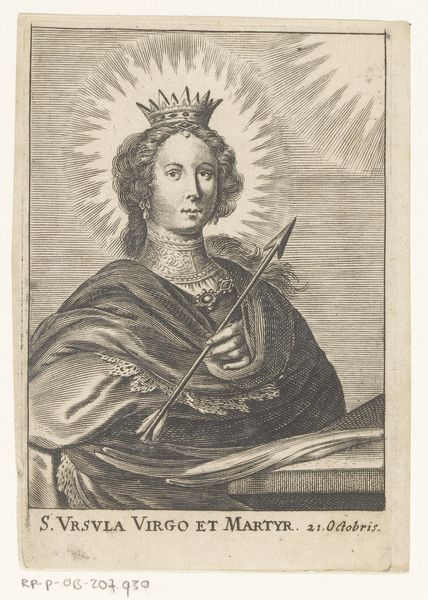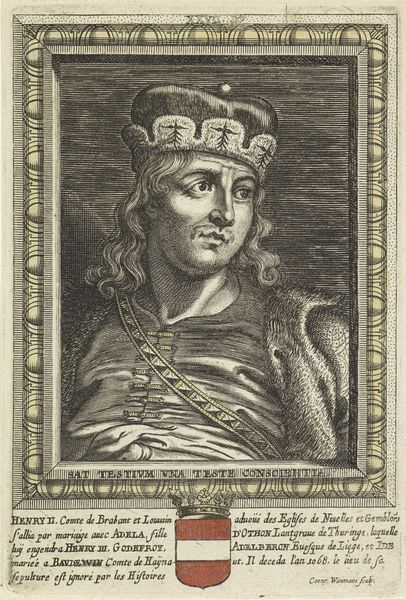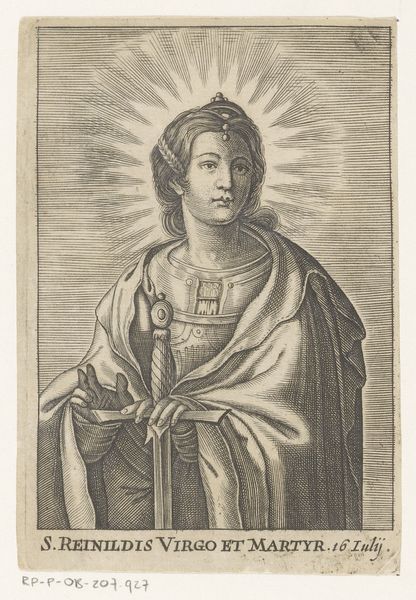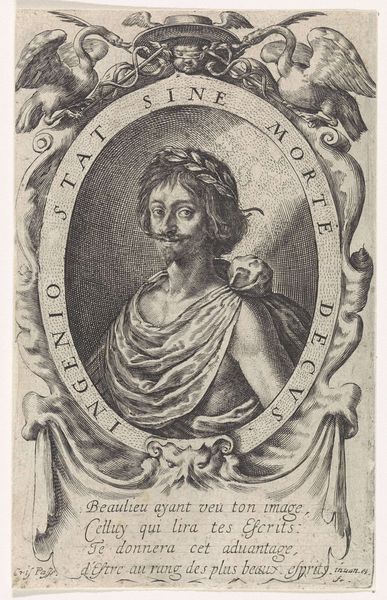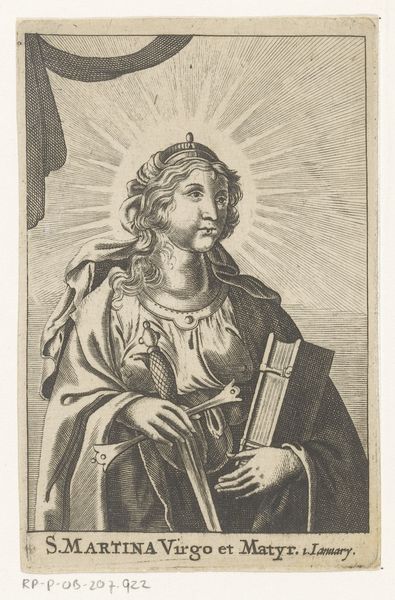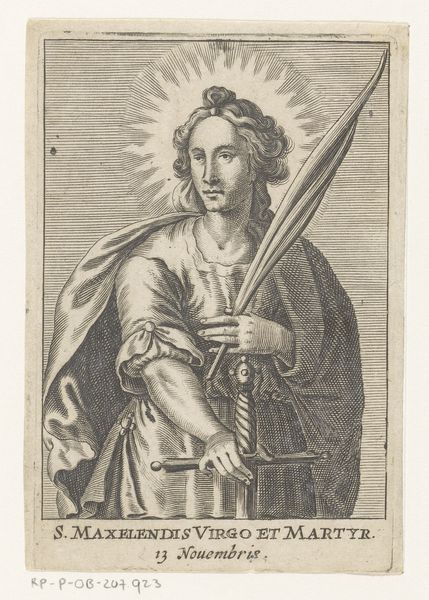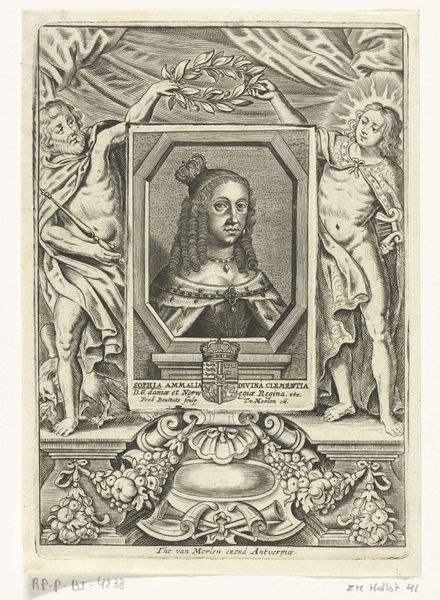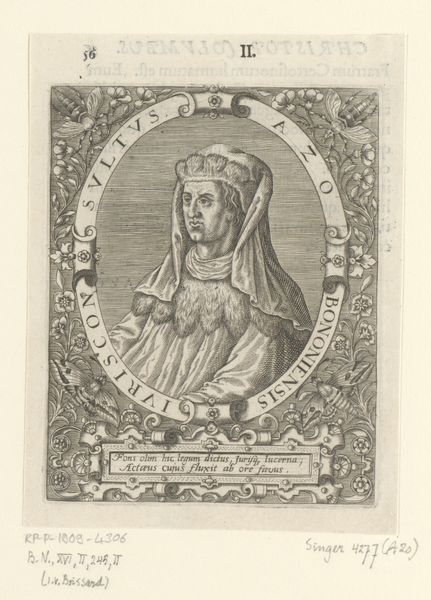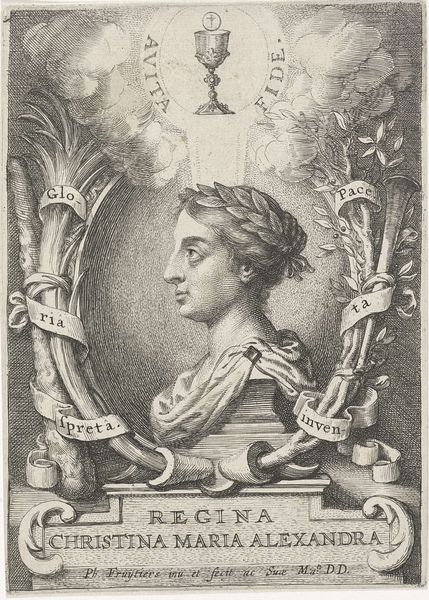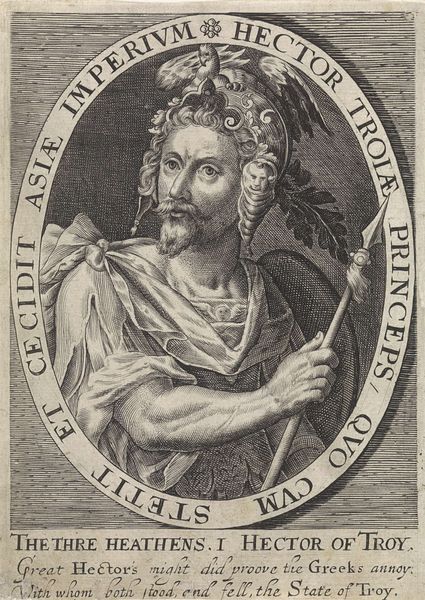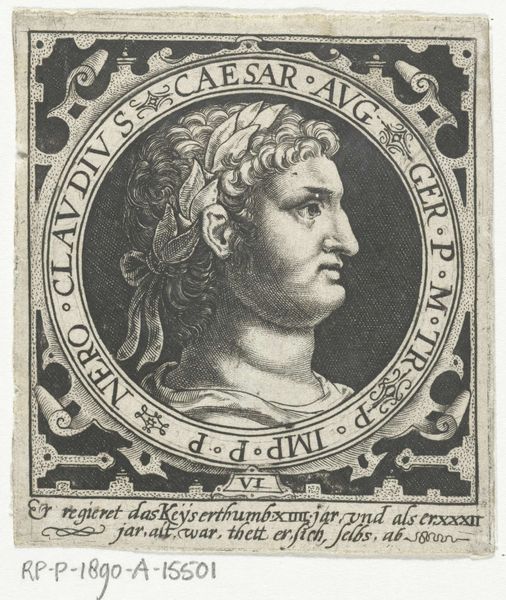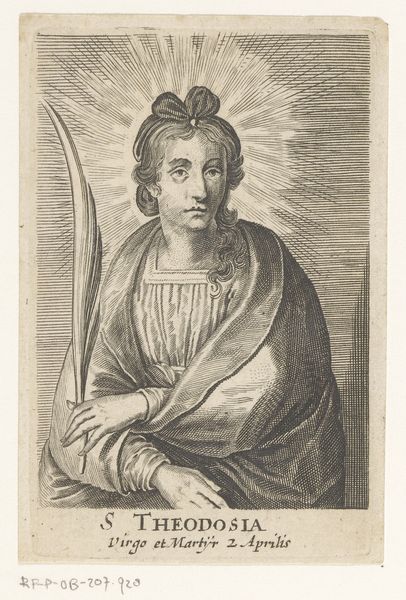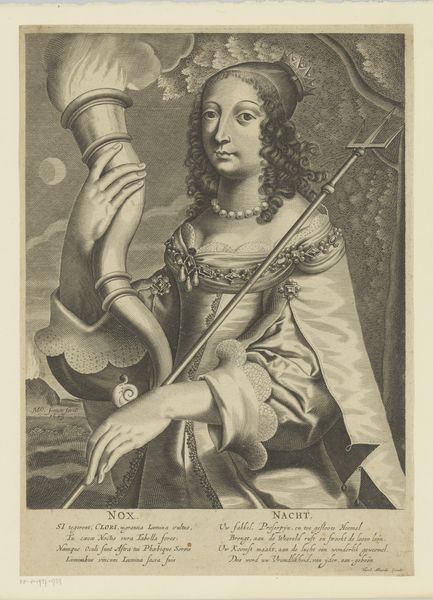
print, engraving
#
portrait
#
aged paper
#
baroque
# print
#
old engraving style
#
figuration
#
form
#
personal sketchbook
#
highly detailed
#
line
#
history-painting
#
engraving
Dimensions: height 141 mm, width 102 mm
Copyright: Rijks Museum: Open Domain
Johannes Eillarts created this print of the bust of Christ in the late 16th or early 17th century. The image presents a serene and idealized vision of Christ, framed by ornate borders and Latin inscriptions. These inscriptions, along with the decorative elements, situate the work within a specific cultural and religious context. The Netherlands, where Eillarts was active, was undergoing significant religious and political upheaval during this period. The rise of Protestantism challenged the dominance of the Catholic Church, leading to conflicts and divisions within society. Art became a powerful tool for expressing religious beliefs and asserting cultural identity. Prints like this one played a crucial role in disseminating religious imagery and promoting specific doctrines. The choice of Latin inscriptions reflects the Church's intellectual heritage, appealing to an educated elite and asserting the authority of tradition. To truly understand this image, we might delve into theological treatises, consult historical archives, and examine the patronage networks that supported artistic production. By situating art within its social and institutional context, we gain a deeper appreciation of its power and significance.
Comments
No comments
Be the first to comment and join the conversation on the ultimate creative platform.

